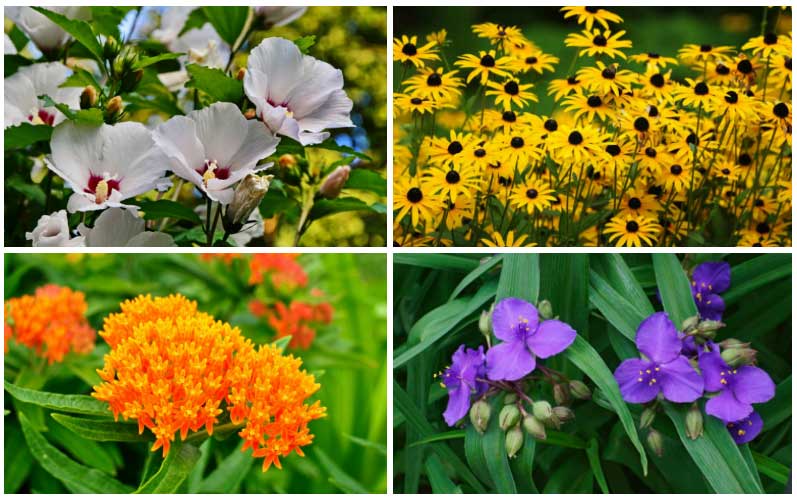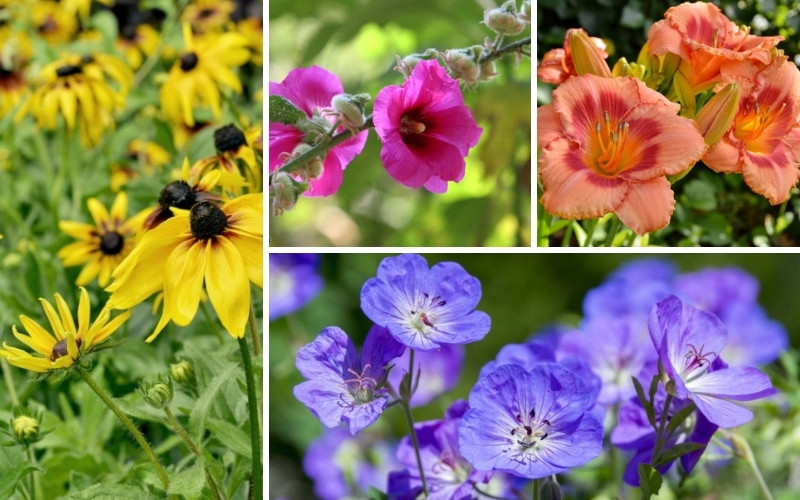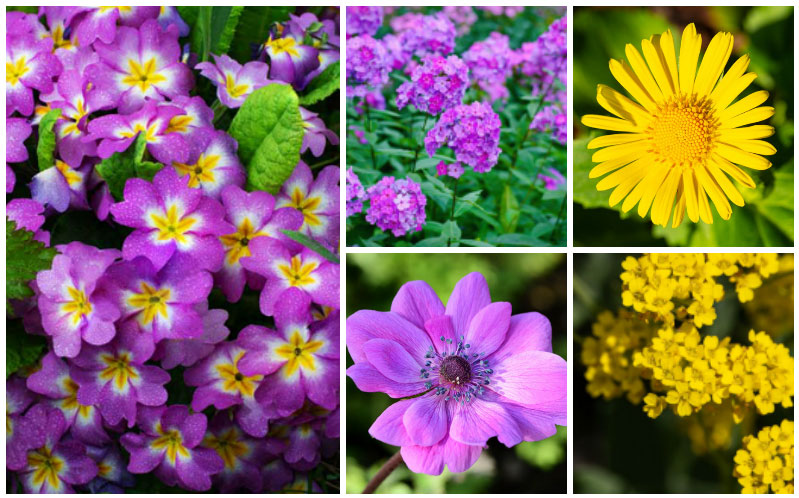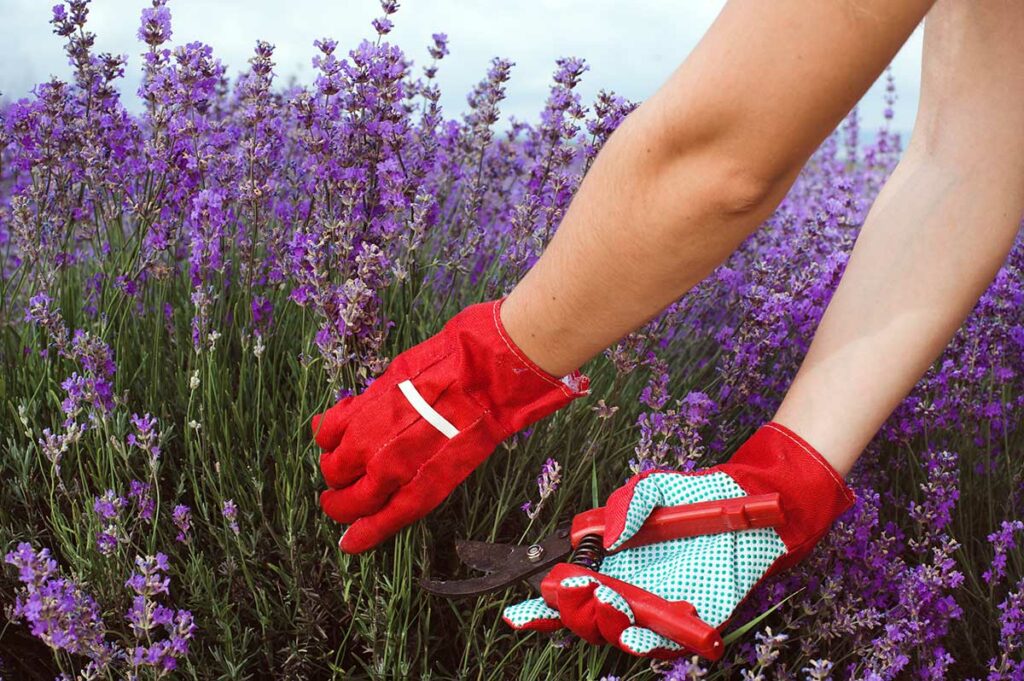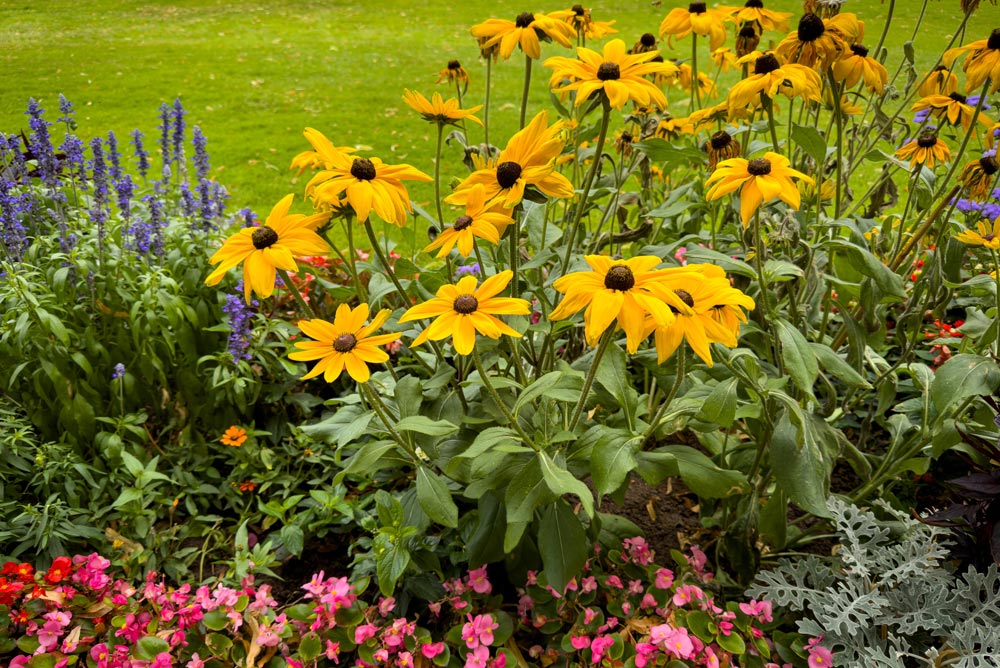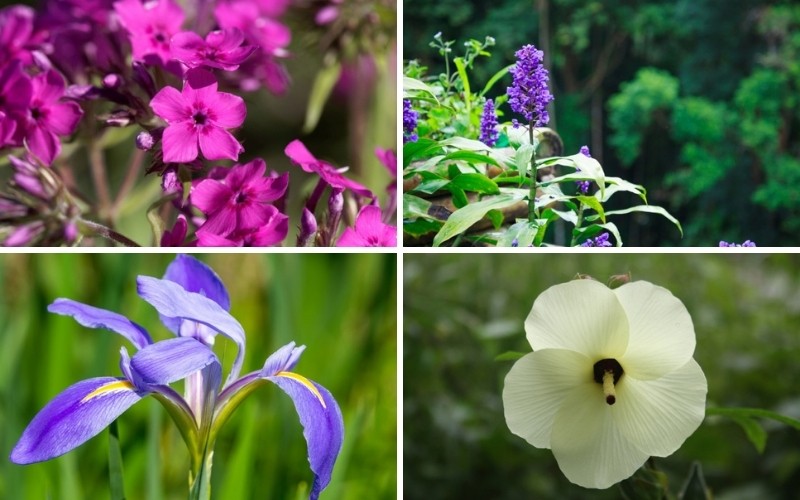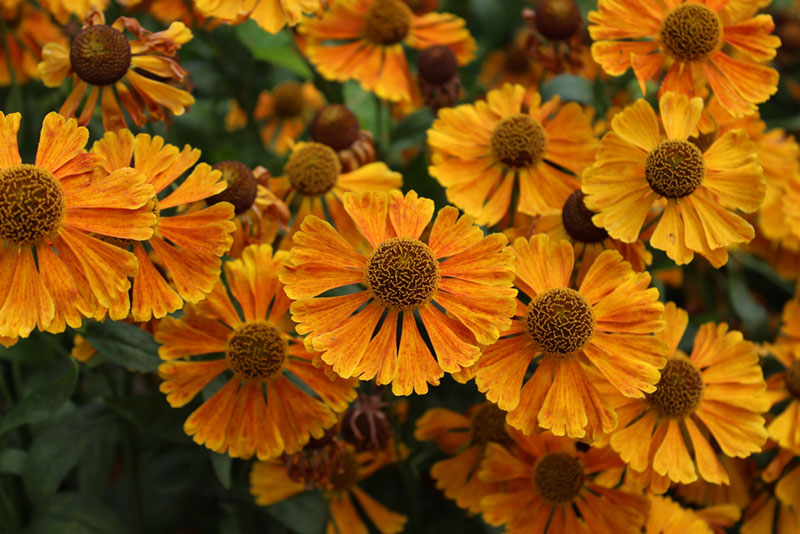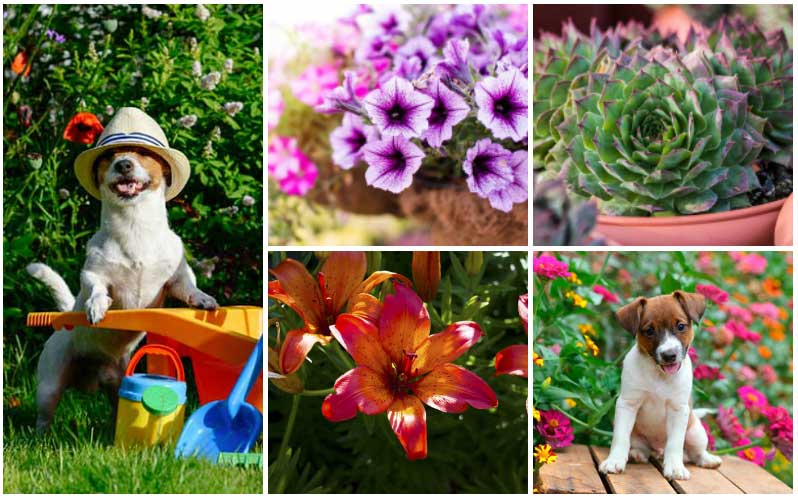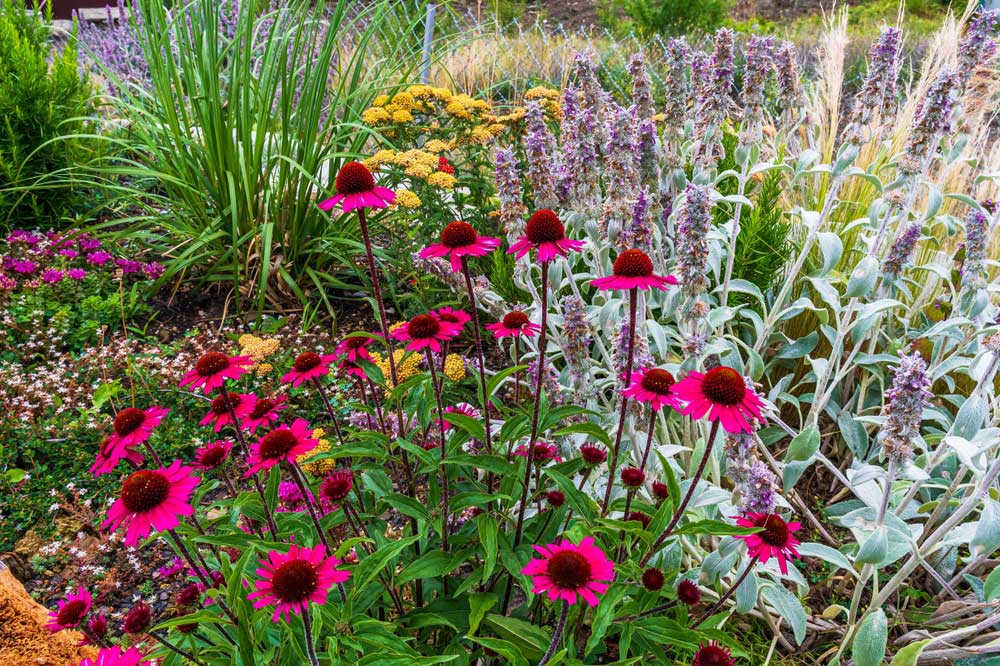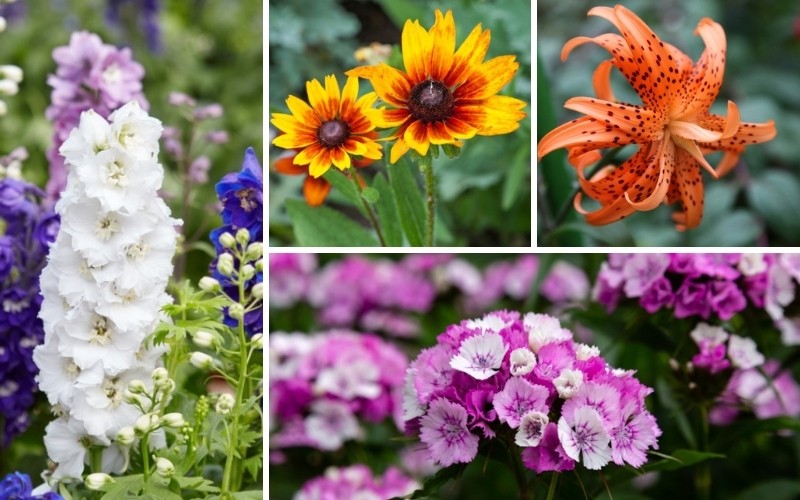
If you are a Montana gardener, you already know you need to plant cold-hardy perennials that can survive cold temperatures.
Montana falls into four USDA plant hardiness zones from 3A to 6a, with much of the state in zones 3 and 4. Knowing your specific hardiness zone is important before choosing perennials for your flower bed.
Consider these hardy perennials for your Montana flower bed.
Tiger Lily (Lily tigrinum)
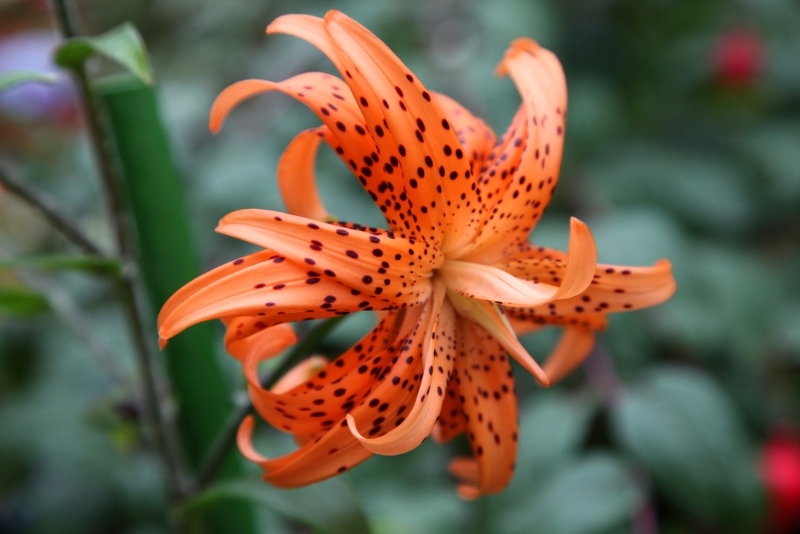
These striking plants produce orange blooms with speckled throats and refluxed petals. Some new hybrids feature petals in shades of white, red and yellow with contrasting speckles in the center. They attract hummingbirds and brighten any garden spot. They reach heights of 4 to 5 feet with a similar spread. They prefer full sun in average to organic soil that drains well. Tiger lilies bloom in mid-summer to early fall and are hardy to USDA plant Hardiness zones 3 through 8.
Blazing Stars (Liatris spp.)
Blazing stars produce a tall spire covered with reddish purple blooms in mid-summer. They grow to heights of 2 to 4 feet with a spread of 18 inches and make a striking contrast with coreopsis. They prefer full sun but will tolerate light shade. These perennials prefer moist, fertile soil, but will tolerate poor soil. Blazing stars are hardy in USDA plant hardiness zones 3 through 8.
Bleeding Hearts (Dicentra spectablis)
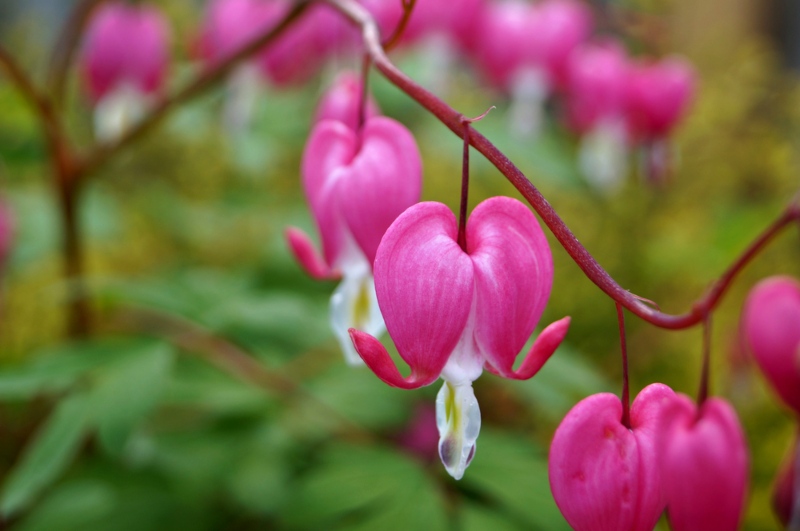
Bleeding hearts are shade-loving plants that produce tiny heart-shaped blooms on an arching branch. Colors range from white and pink to deep red. They prefer moist, humus-rich soil that does not dry out excessively. Bleeding hearts are hardy in USDA plant hardiness zones 3 through 8. Foliage yellows and dies back a few weeks after blooming.
Blanket Flower (Gaillardia aristate)
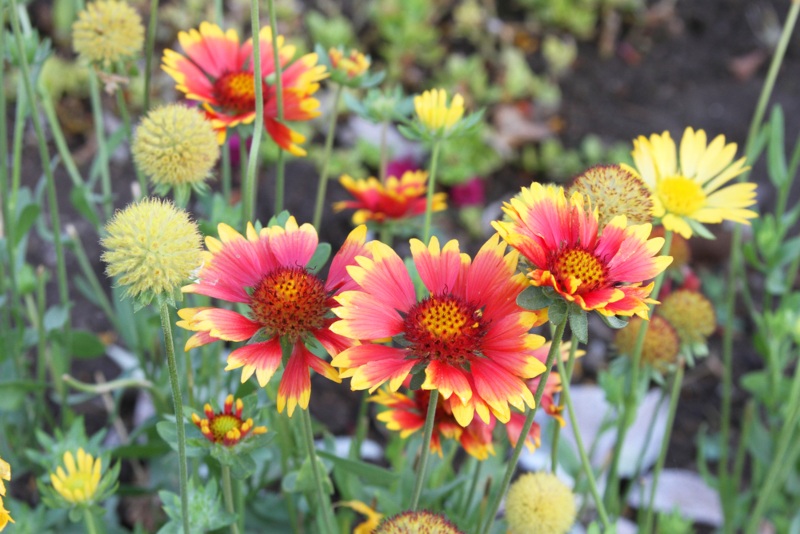
Blanket flowers are hardy, sun-loving perennials that bring the garden to life with fiery yellow, orange and red blooms from late spring to fall. These flowers love moist, rich soil but will tolerate dry soil. They grow to heights of 12 inches with a similar spread. Blanket flower is hardy in USDA plant hardiness zones 3 through 8.
Painted Daisy (Tanacetum coccineum)
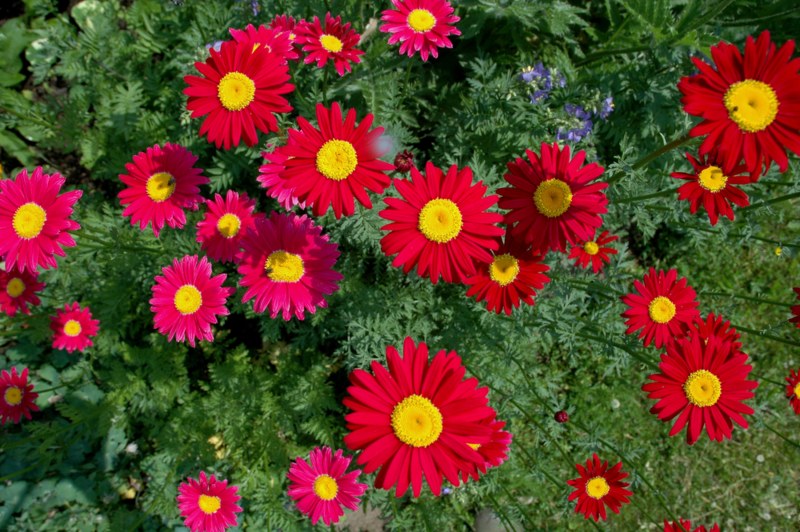
Painted daisies produce long-lasting blooms in shades of white, red and pink with contrasting yellow centers. They reach heights of 2 to 3 feet with a spread of 18 inches. They prefer full sun to partial shade. Painted daisies require average, well-drained soil. Add painted daisies to cottage gardens or along walkways to add a splash of bright color. Painted daisies are hardy in USDA plant hardiness zones 3 through 7.
Lily of the Valley (Convallaria majalis)
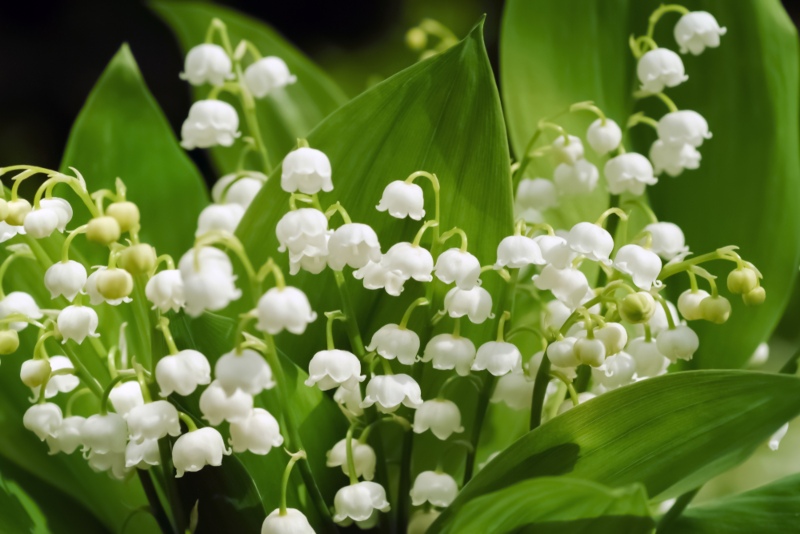
Lily of the valley is a shade-loving perennial prized for it’s intoxicating fragrance. The arching flower stem is laden with tiny bell-shaped flowers in the spring. While wild lily of the valley are white, some cultivars produce delicate pink blooms. Lily of the valley prefers rich, moist soil. It naturalizes readily spreading by underground rhizomes. Lily of the valley grows to heights 6 to 12 inches with a similar spread. It is hardy in USDA plant hardiness zones 3 through 8.
Coreopsis (lanceolata or grandiflora)
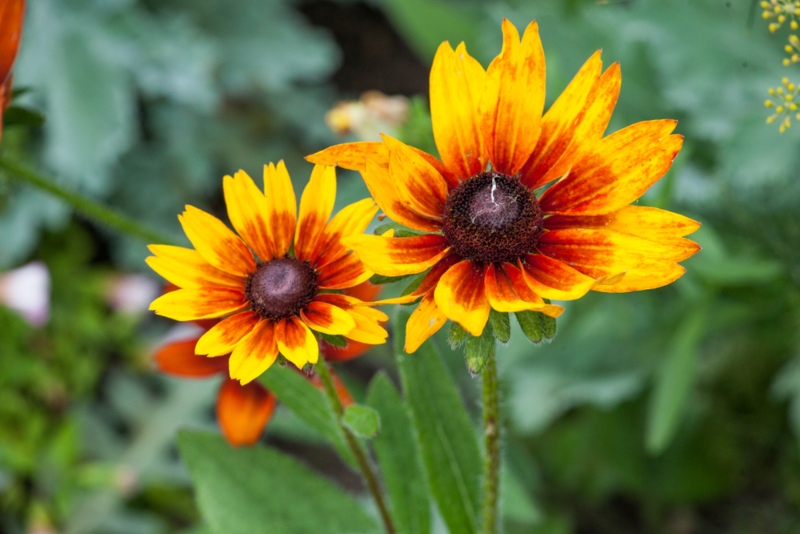
Coreopsis are sun-loving perennials that produce single or double petaled flowers in shades of yellow and gold, depending on the cultivar. They reach heights of 2 to 6 feet with a similar spread, depending on the cultivar. Coreopsis prefers average, well-drained soil but will tolerate poor soil. Coreopsis will naturalize in the landscape if allowed to grow freely. They are hardy in USDA plant hardiness zones 4 through 9.
Delphinium (Delphinium spp.)
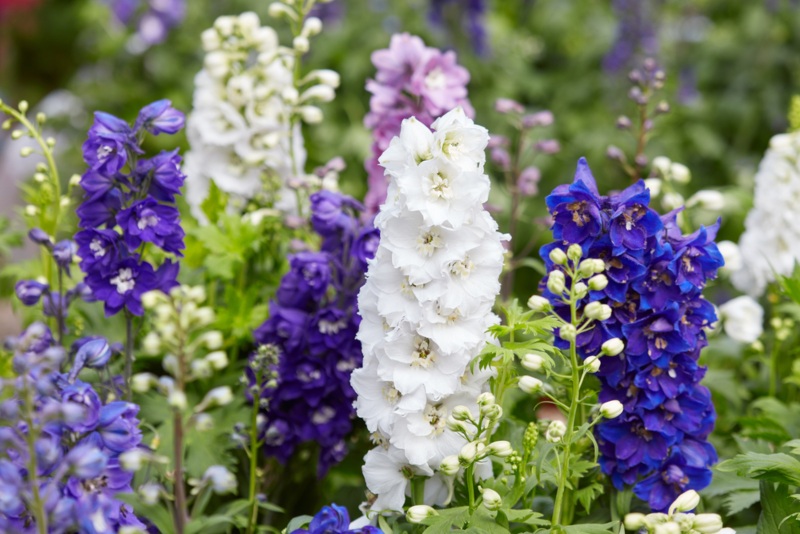
Delphiniums, also called Larkspur, are showy flowers that have a home in nearly any perennial bed. These bold flowers range in color from white and pink to deep shades of blue and purple. Blooms open along an upright stem in mid-summer creating an explosion of color. Delphiniums prefer humus-rich, well-drained soil that is moderately moist. They are hardy to USDA plant hardiness zones 3 through 7.
Sweet William (Dianthus barbatus)
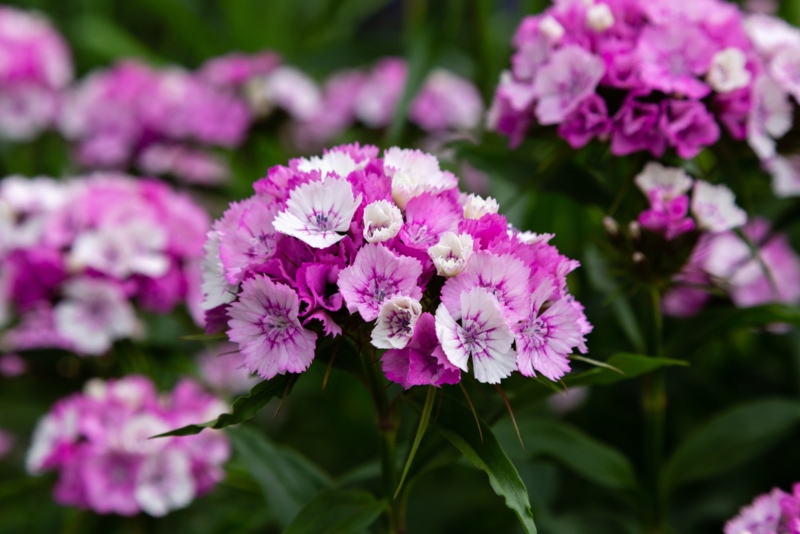
Sweet William is a delightful flower that prefers full sun, but will happily grow in partial sun. It produces clusters of tiny flowers in shades of white, pink, red with many striking bicolors, too. It reaches a height of 1 to 2 feet with a spread of 1 foot. This lovely flower attracts both hummingbirds and butterflies setting the garden afire with color and movement. It prefers humus-rich soil that is not allowed to dry completely. Sweet William is hardy in USDA plant hardiness zones 3 through 9. It blooms from late spring until the frost arrives in the fall.
Foxglove (Digitalis purpurea)
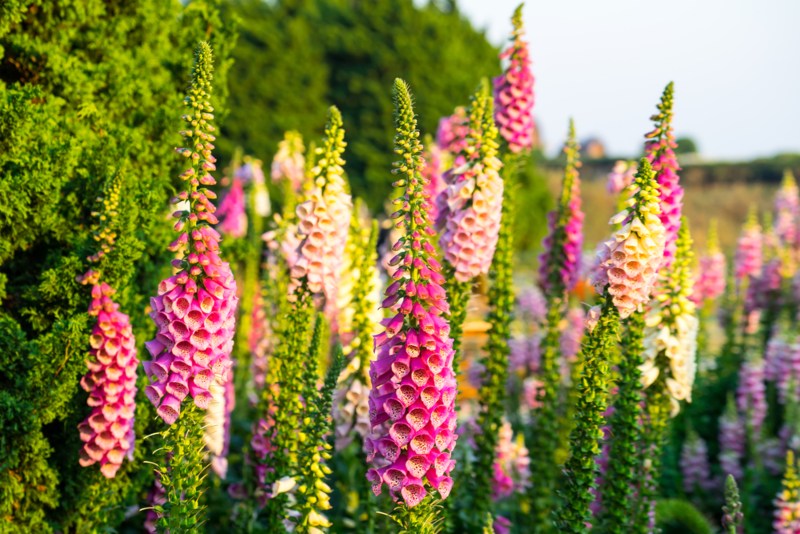
Foxglove makes a bold statement in the flower bed with its tall spikes of bell-shaped blooms in late spring and early summer. Flower color ranges from white and pale pink to shades of lavender and purple. It grows to heights of 2 to 5 feet with a spread of 1 to 2 feet. It prefers humus-rich, acidic soil and will grow in either full sun or partial shade. Hummingbirds love foxglove and will keep the garden alive with movement. Foxglove is hardy in USDA plant hardiness zones 4 through 8.
Daylily (Hemerocallis spp.)
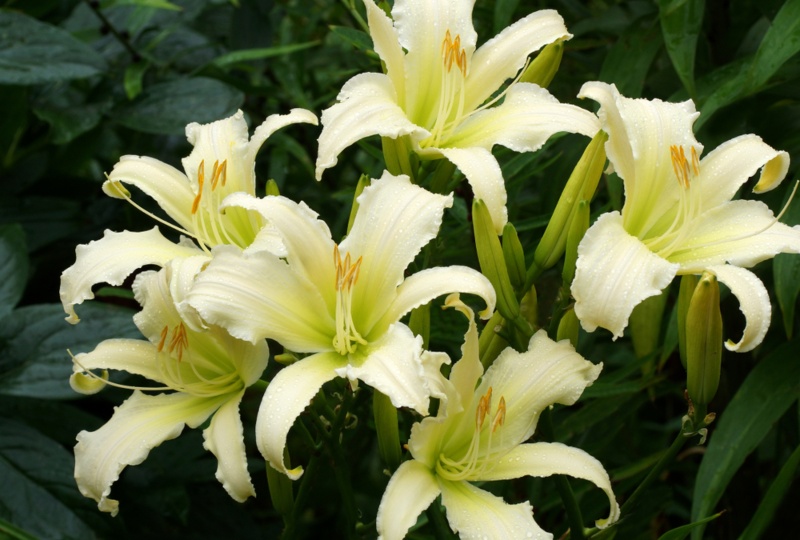
Daylilies are the mainstay of perennial beds and are prized for their bright color and waxy blooms. They prefer full sun and do best in soil rich in organic matter, but do like soil that drains well. Daylilies grow to heights of 3 to 4 feet with a spread of 2 feet, depending on the cultivar. They typically bloom for several weeks in early to mid-summer. Day lilies attract butterflies and other flying insects. They are hardy in USDA plant hardiness zones 3 through 9.
Iris (Iris spp.)
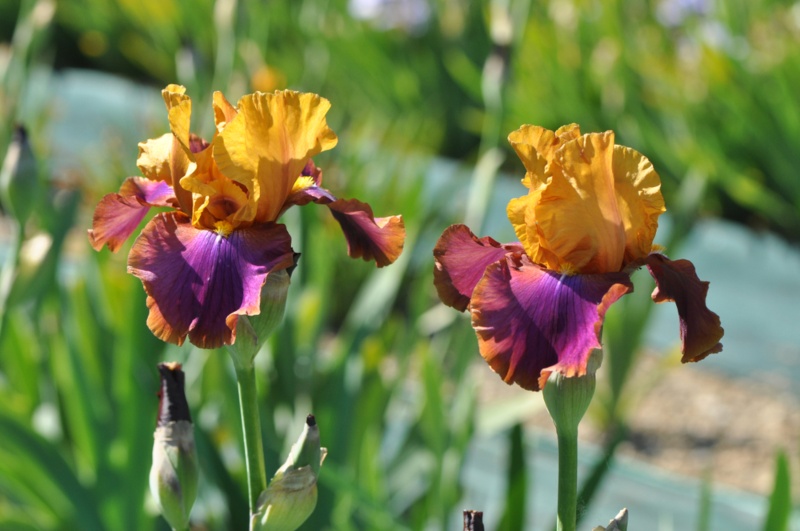
Irises produce bold color in the flowerbed in late spring and into the summer, depending on the cultivar. Their heights range from under 2 feet to towering varieties nearly 4 feet in height. Irises prefer moist, organic soil and a location where they receive full sun. Irises are hardy in USDA plant hardiness zones 3 through 10, depending on the cultivar.
Pay close attention to the hardiness zones and growing requirements listed on the plant label when purchasing perennials. Variations in hardiness and light requirements can vary between cultivars.





